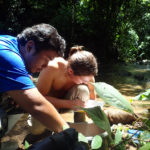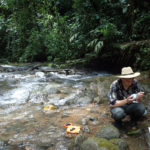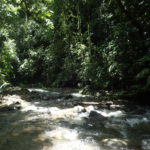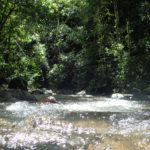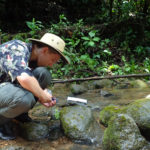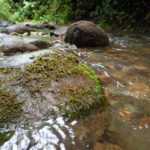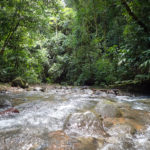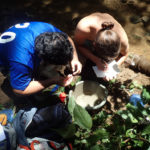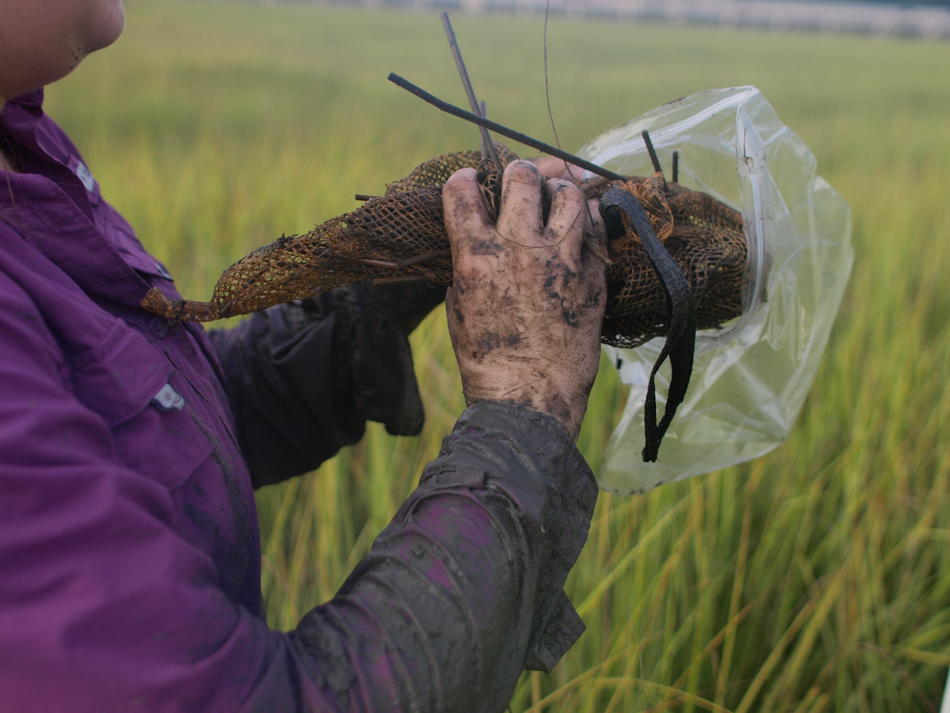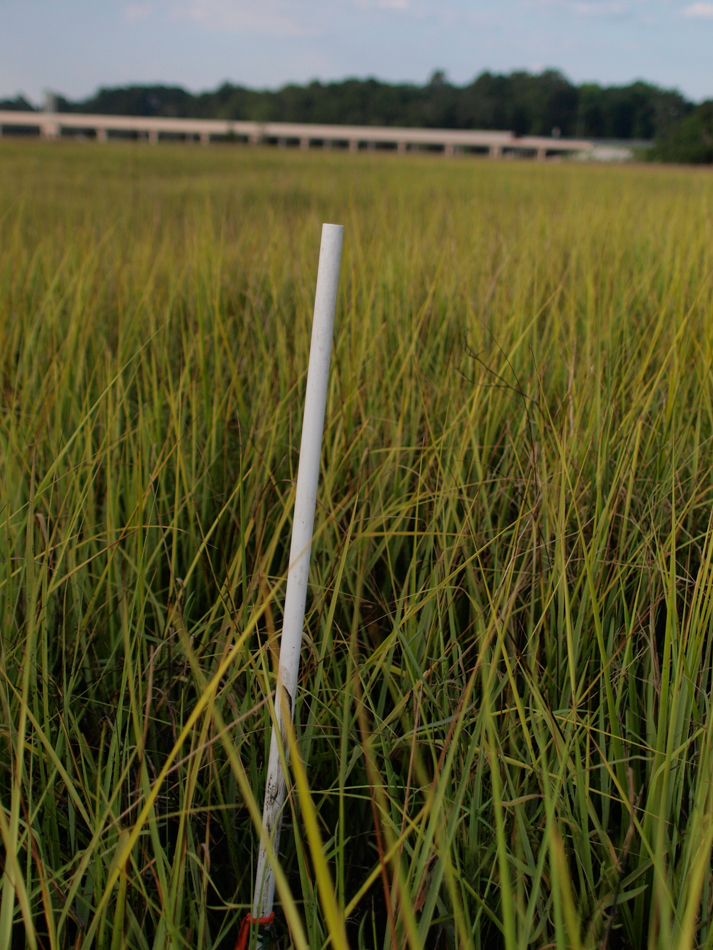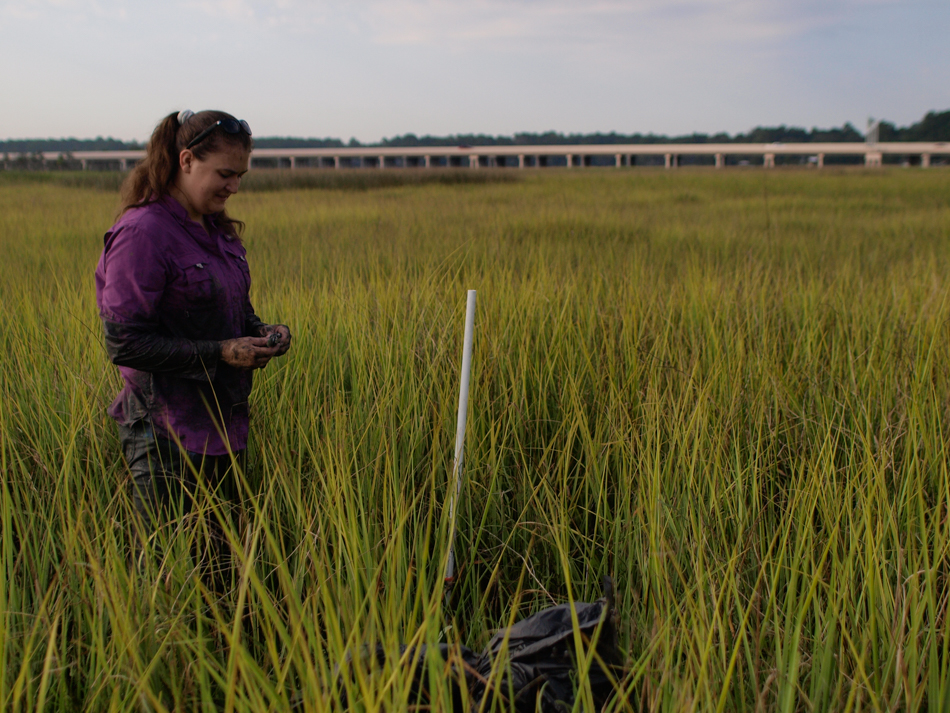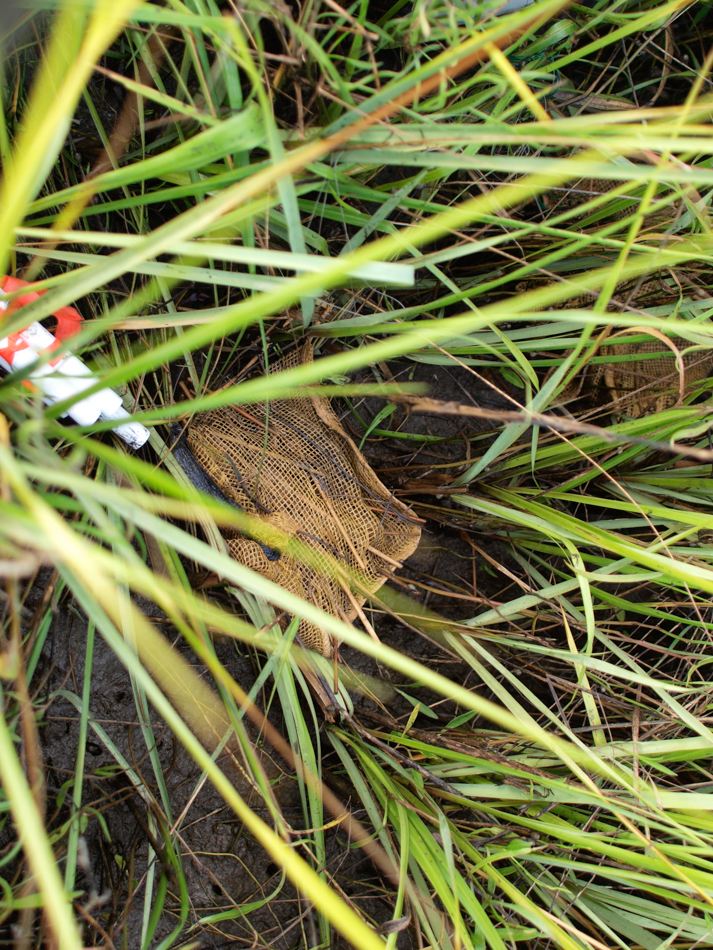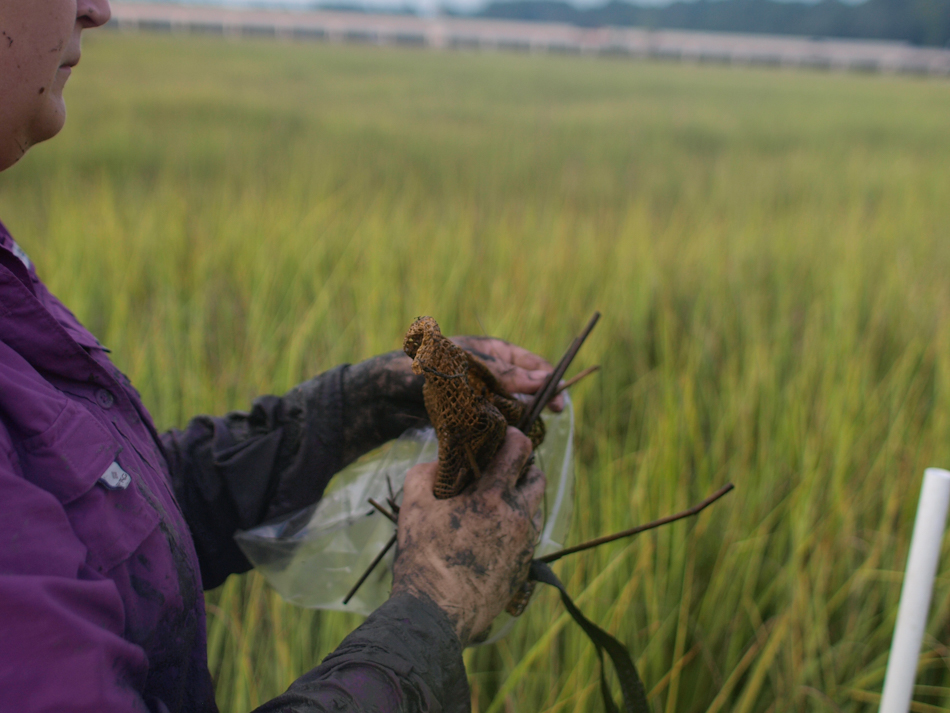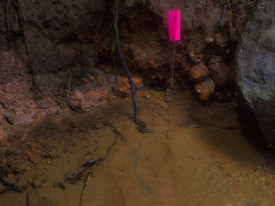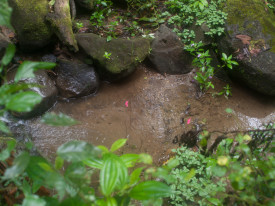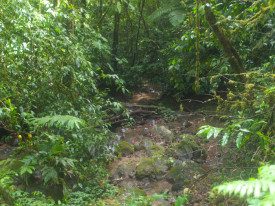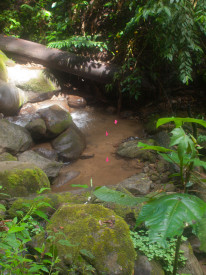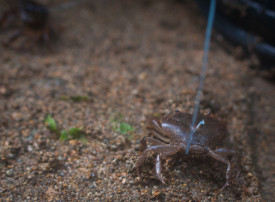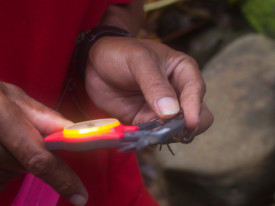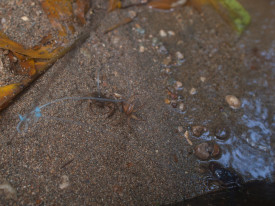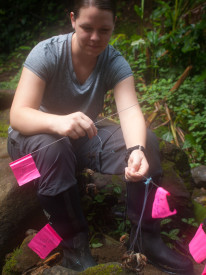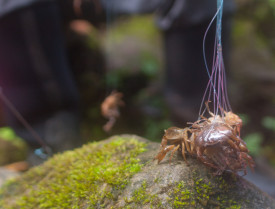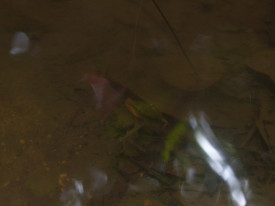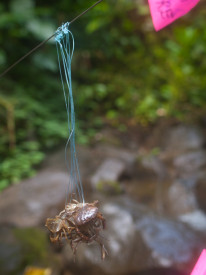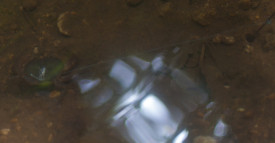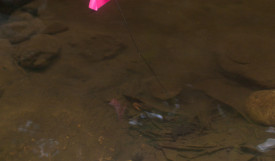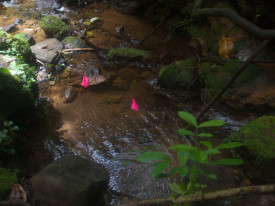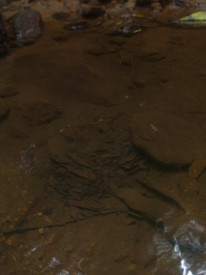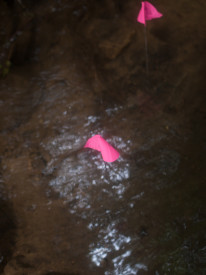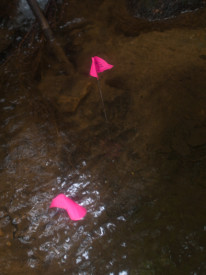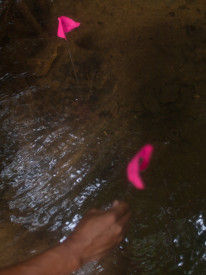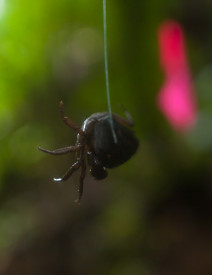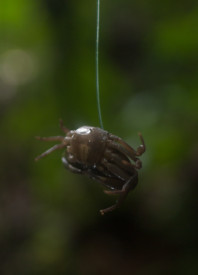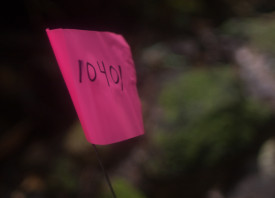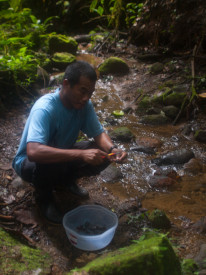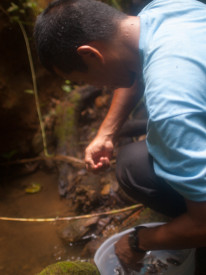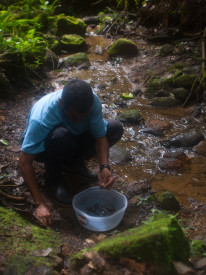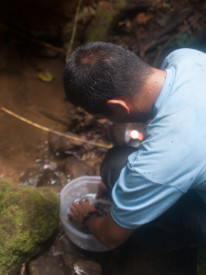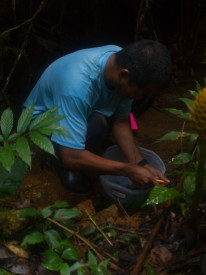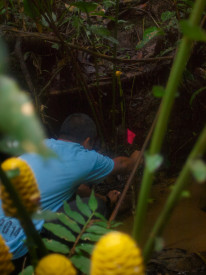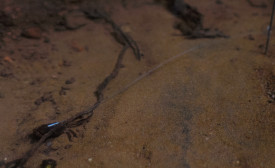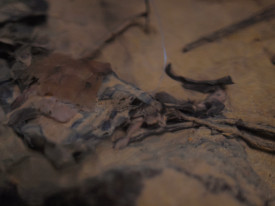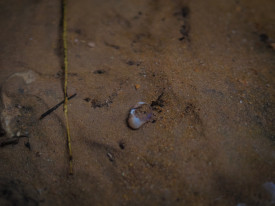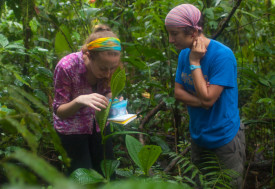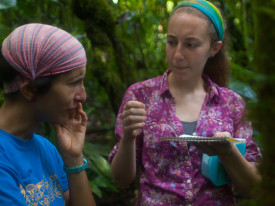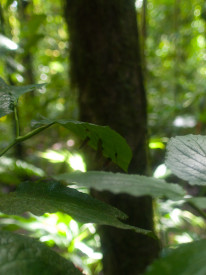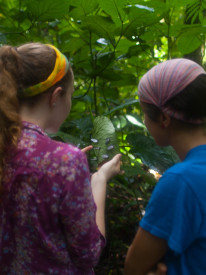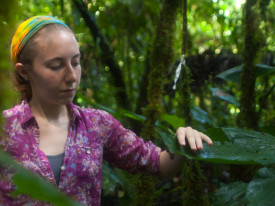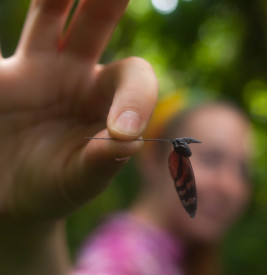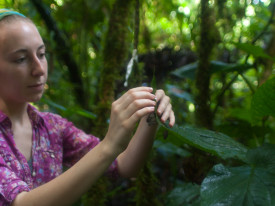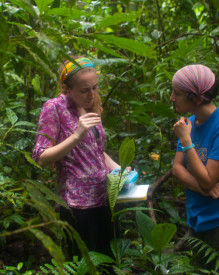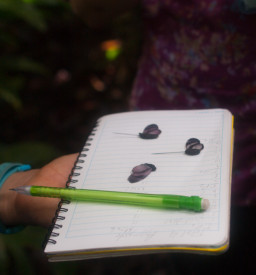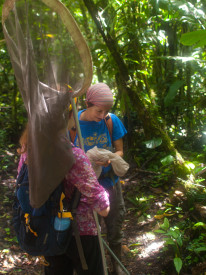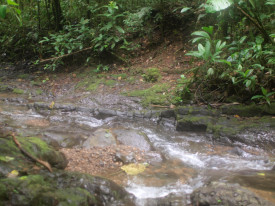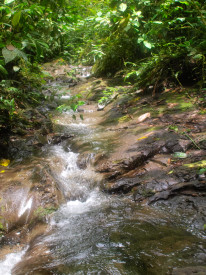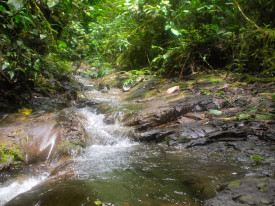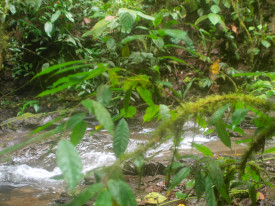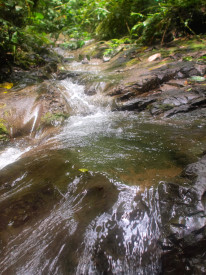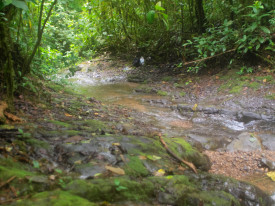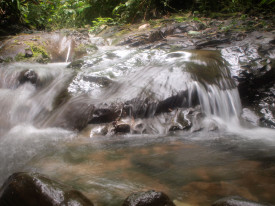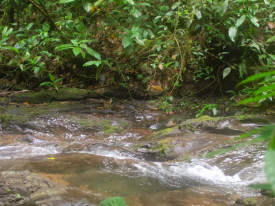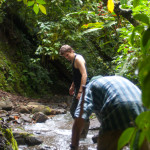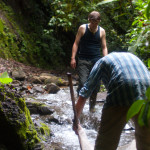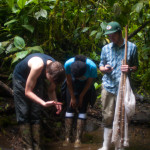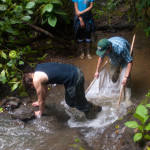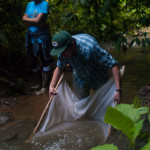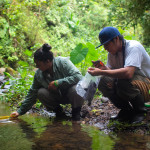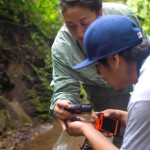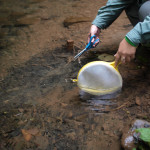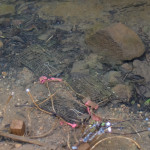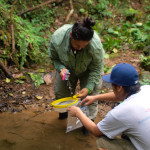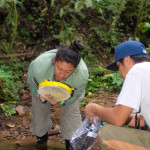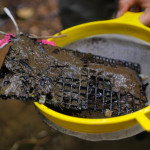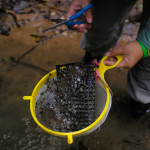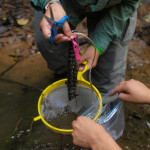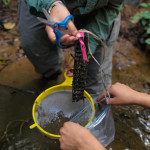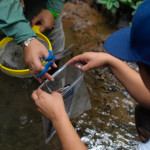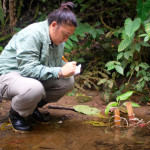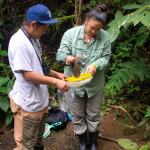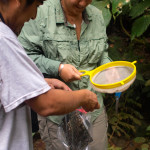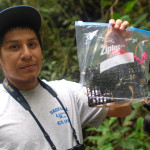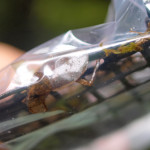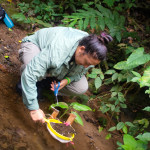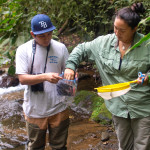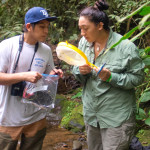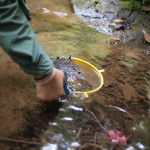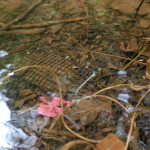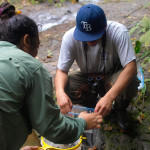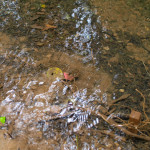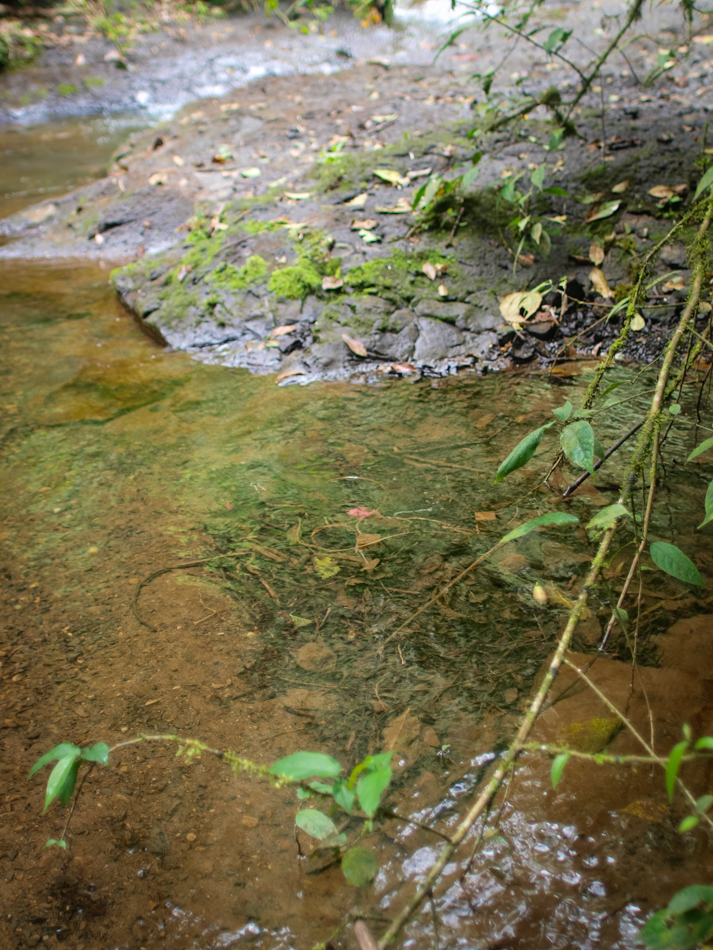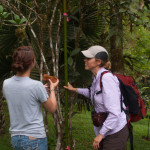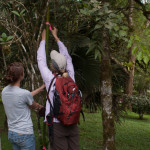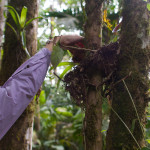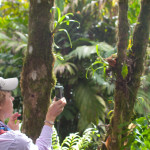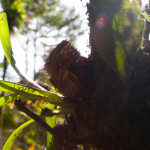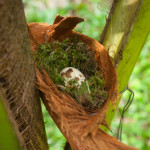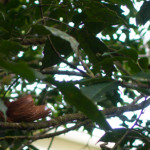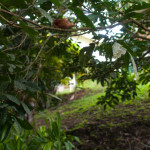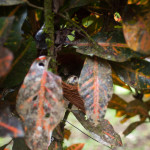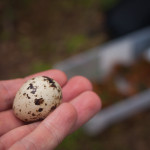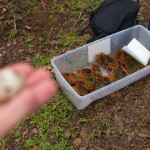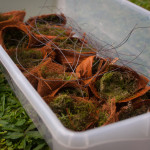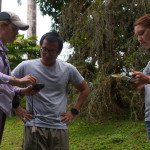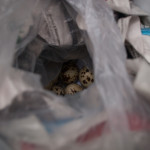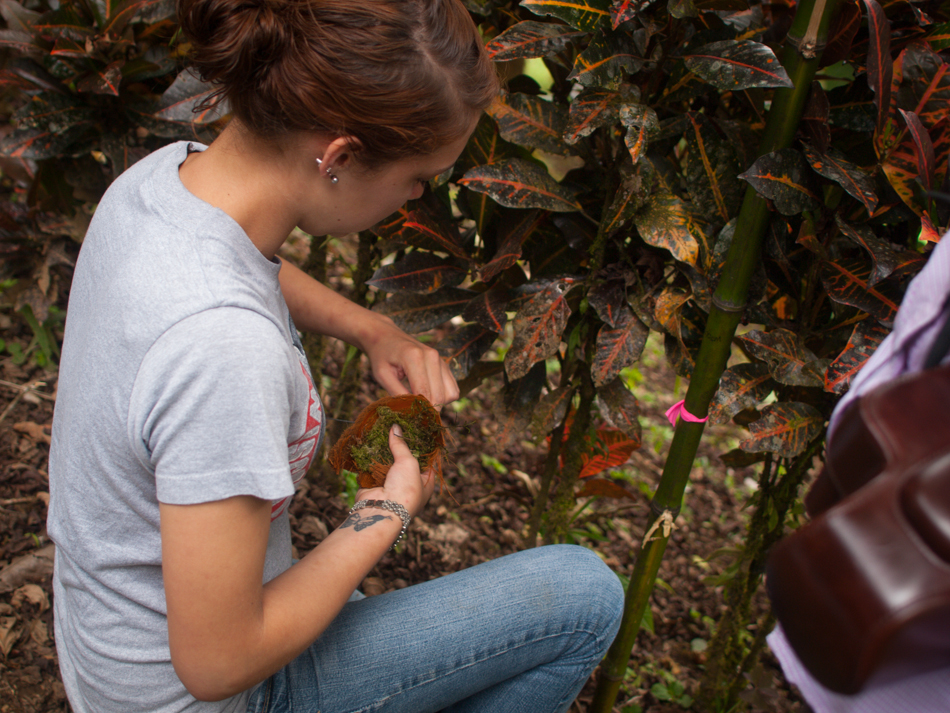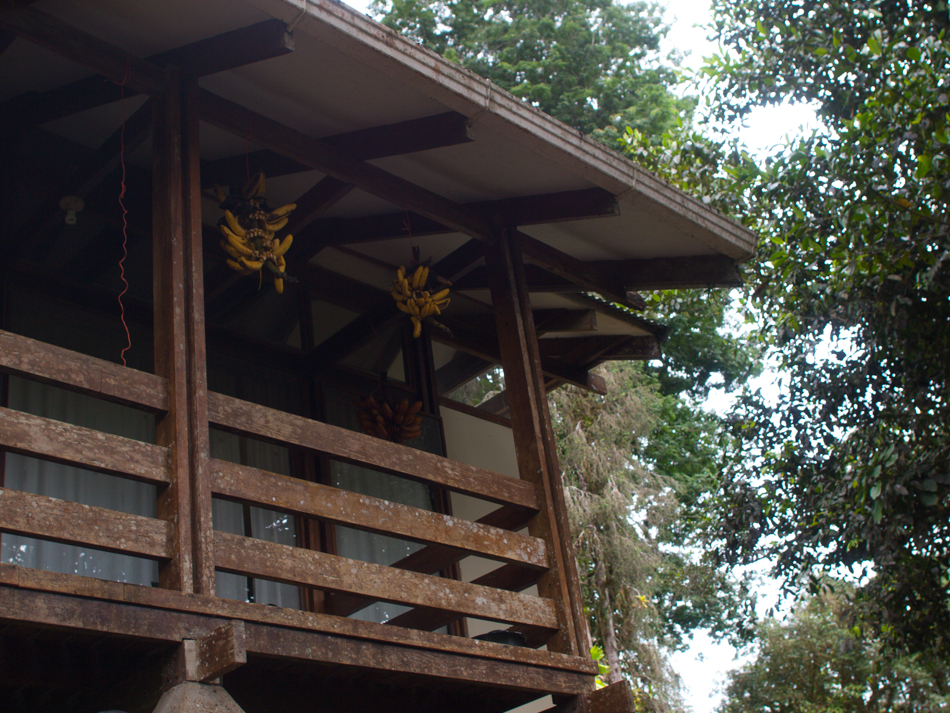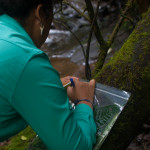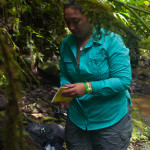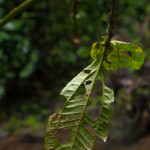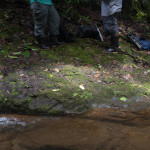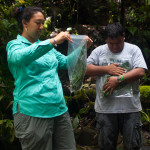John, Steve, and Hunter begin work in Río Java.
Tag Archives: Research
Litter collection
A student collects a leaf litter from Spartina alterniflora and Juncus roemerianus at the end of an experiment we performed during a Coastal Ecology course in 2013.
Pseudothelphusid crab predation risk: Part 1
Jerry, one of my NAPIRE students from Pohnpei, Micronesia, is investigating pseudothelphusidae crab (Allacanthos pittieri) populations at the Las Cruces Biological Station this summer. His study has two major components: (1) measuring crab densities in areas that vary in the amount of leaf litter present (i.e., high and low leaf litter densities), and (2) assessing predation risk in high and low leaf litter areas (after Jenn Clark’s crayfish study; Clark et al. 2013 Hydrobiologia). Jerry hopes to demonstrated higher crab densities and lower predation risk in areas of high leaf litter because crabs are able to use the leaves as refuge and a source of food, both directly, as they are shredders, and indirectly by preying on other invertebrates in the leaf litter.
Here, Jerry has tethered crabs using monofilament fishing line to flagging in about 20 stream pools. The crabs were paired in pools and restricted to either high leaf litter sections or low leaf litter sections of each pool site.
Predation risk of roosting Ithomiin butterflies
Adrea, a recent PhD graduate from UCLA, is mentoring three students in the NAPIRE program with projects on Ithomiin butterflies—a diverse group of clear-winged, neotropical butterflies that form breeding aggregations and tend to roost together. One of Adrea’s students, Katie, is investigating predation risk of roosting butterflies using models of two species that she’s constructed. Here, Katie checks her model butterflies for damage inflicted by predation attempts on the models.
West Branch of the Rio Java
Some images of the West Branch of Rio Java.
This branch drains primary forest, and is rich in macroinvertebrate diversity, but doesn’t appear to have fish. In 2013, David surveyed this stream for fish, but did not discover any, and this year, Jackalyn collected macroinvertebrates using a D-net and immediately found a couple of new taxonomic groups she had previously not sampled.
The stream is steep, which likely prevents fish dispersal, and it’s bedrock substrate isn’t forgiving when the near-daily rains fill the banks.
Collecting fish from the West Branch of Rio Java
David and recruited field help sample fish the west branch of Rio Java, a tributary that drain primary wet forest.
Mel’s litter bag collection
Mel’s experiment involved collecting litter of two species and distributing litter bags in backwater areas along a Rio Java at Las Cruces and monitoring decomposition of the litter. Here are some photographs of her second and last collection period. Mel was interested in examining macroinvertebrate communities associated with decomposing leaf litter, so she carefully removed litter bags with a colander and transported the bags to the lab for processing in plastic bags. Daniel Bird assisted in this collection. Mel plans to present her data at some meetings, including SACNES, which she’s receiving funding to attend in October.
Stream collections and characterization
Nest predation in the Wilson Botanical Garden
Wendy Kuntz, a NAPIRE faculty mentor from University of Hawaii-Kapi’olani Community College, is advising a couple of students in projects about bird behavior and nest predation. Here, Shaina, one of Wendy’s students, is placing 40 artificial nests within the Wilson Botanical Garden at Las Cruces to assess nest predation rates at both high nest locations (~2 m) and low nest locations (~1 m). Shaina monitors loss of quail eggs in the nests over the course of a week. I “helped” set a few of the nests up one day… but I ended up dropping the cooler full of quail eggs and smashed about 8 of them. I will not likely be asked to help again…
Collecting Miconia appendiculata
Mel and José collected several similar looking, native species for their decomposition experiments. We chose leaves of Miconia appendiculata and an invasive bamboo (collecting leaves here) to compare in their experiments. Here, they collect the M. appendiculata leaves from trees lining the Río Java.

